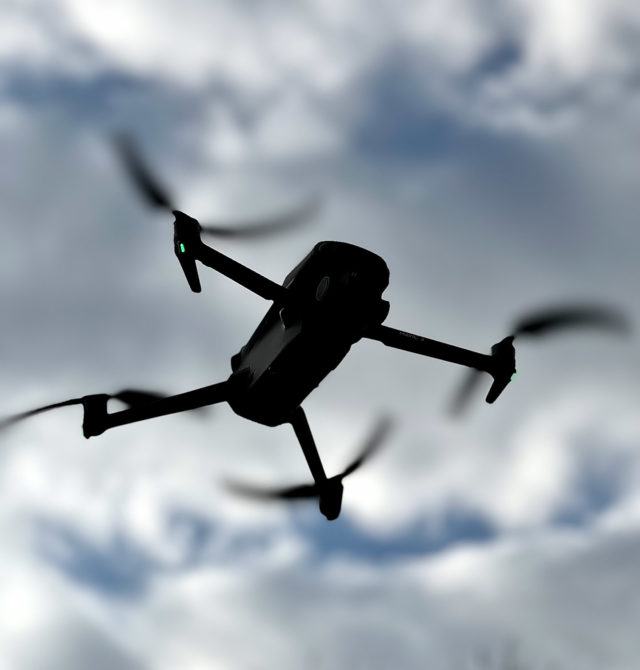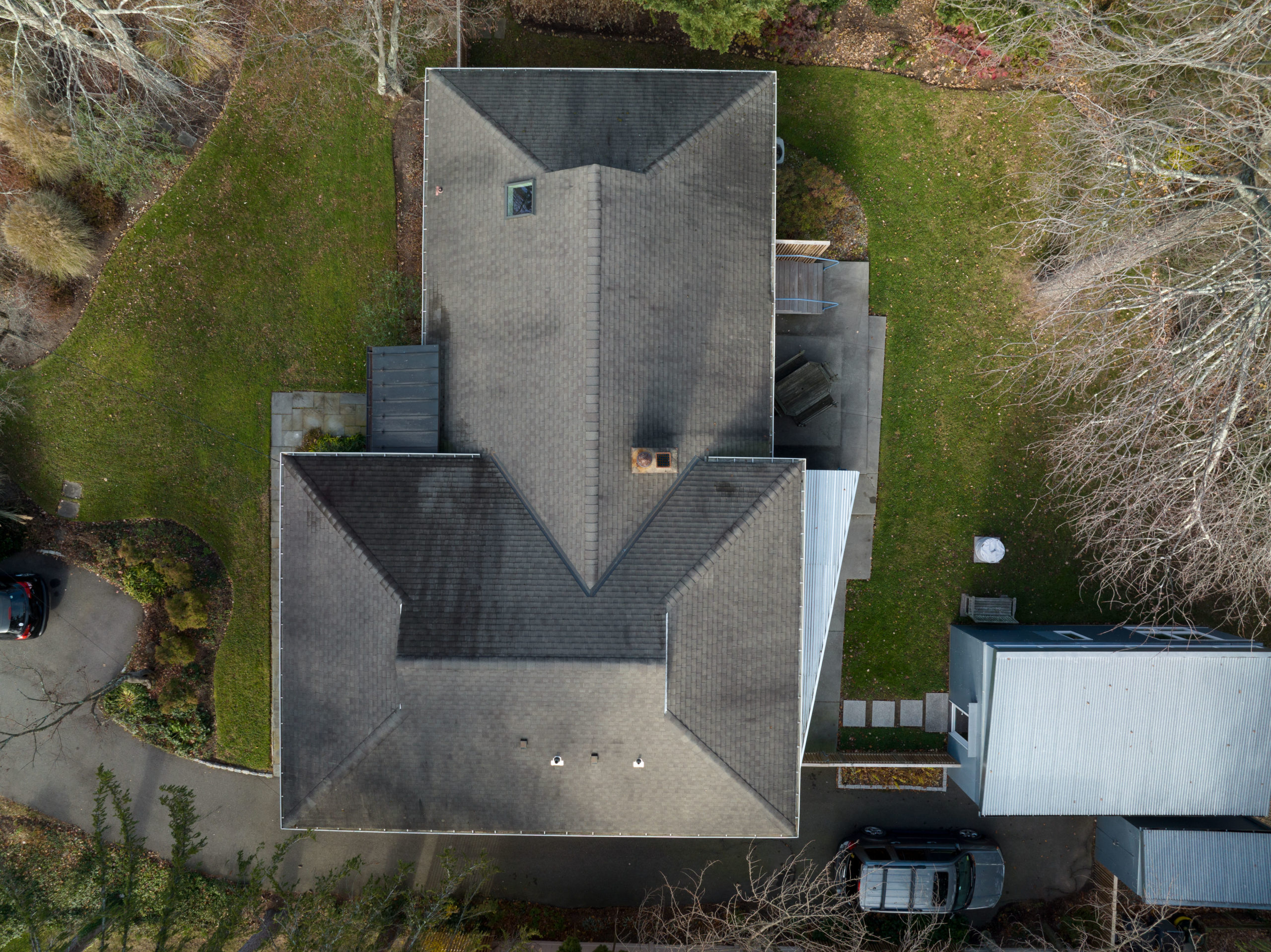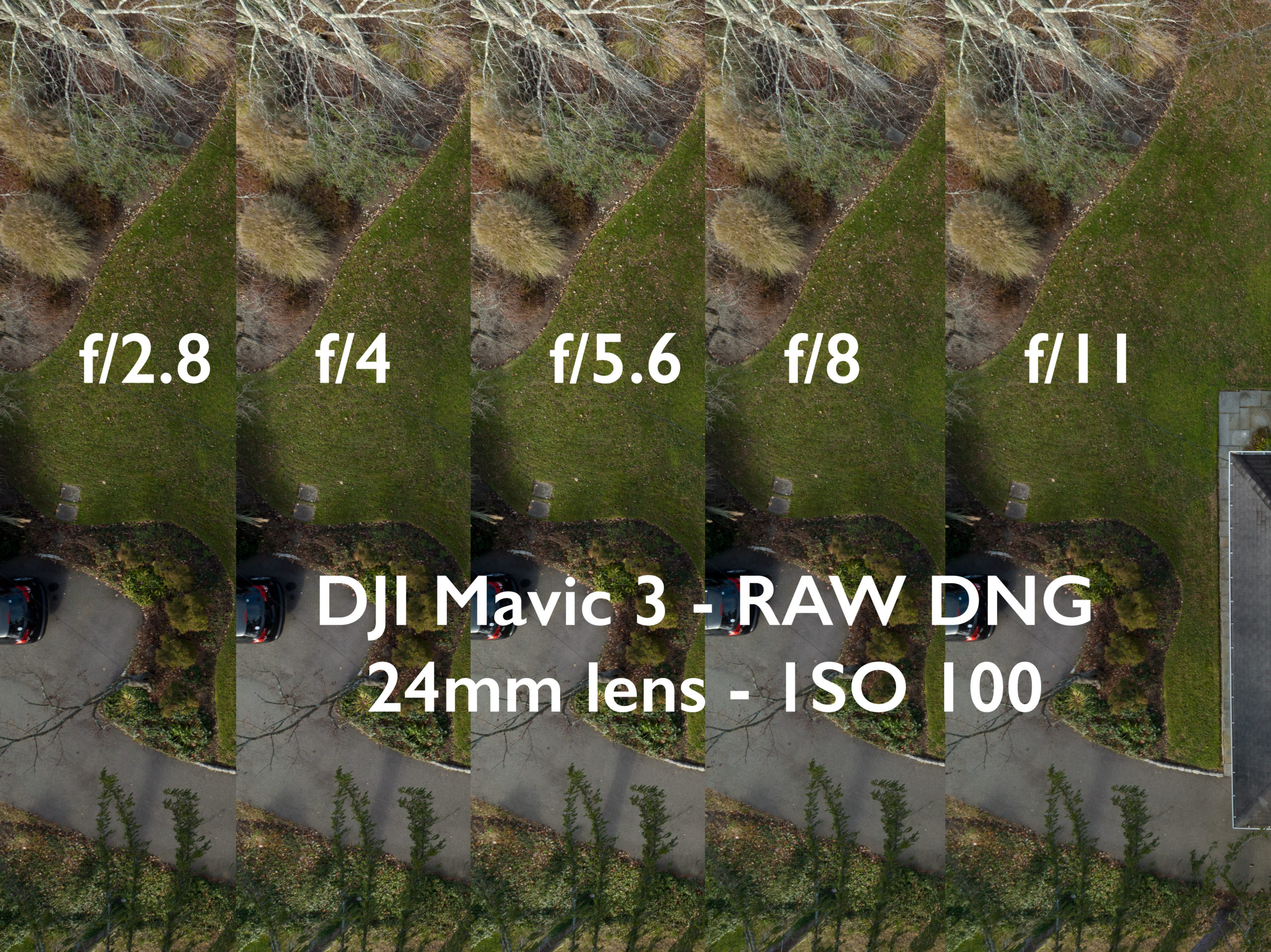
Here are a few initial lens tests of the new DJI Mavic 3 drone. The drone is the much anticipated update to DJI’s Mavic 2 Pro. It brings with it the promise of better image quality due to a 4/3″ image sensor, greater dynamic range, a better lens, and for video – increased resolution, more codec options, and higher bit rates. One version of the drone, the Mavic 3 Cine, even boasts internal ProRes recording.
While the implementation of some of those features along with DJI’s staggered release of the drone’s automated firmware/software-based functionality has proven to be somewhat controversial, the drone does deliver from the start on image quality.
The Final 25 Minutes of the Day in 3 Minutes – on YouTube

Lens Tests
My experience with DJI drones and their built-in cameras has been that each one was unique regardless of sensor size or resolution. The Phantom 4, the Phantom 4 Pro, and the Mavic 2 Pro all behaved differently when it came to the interplay of optics, aperture, sensor, and software. So, rather than evaluating image quality from a random assortment of photos or video clips, I prefer to create a baseline of optimal settings and work from there.
The following two tests look at the optimal aperture settings on the Mavic 3 for both photography and video.


Earlier iterations of DJI consumer and prosumer drones used 3:2 sensors and as such captured still images natively in that format. The Mavic 3 has a 4:3 sensor so it captures still images with its 24mm equivalent lens within that ratio.
This is as opposed to the Mavic 3’s video capture mode which can be set to 17:9 (in DCI 5.1K and DCI 4K) or 16:9 (UHD 4K). This difference means that still images on the Mavic 3 use all of the sensor, fully into the sensor’s corners, rather than Mavic 3’s video capture which crops the 4:3 sensor top and bottom to create the DCI 17:9 and UHD 16:9 formats. At least for video, this mitigates what can be the worst of lens image issues, the far reaches of a lens’ image circle.
That said, the camera on the Mavic 3 has the best lens by far of all of the DJI drones I have used to date. These include the aforementioned Phantom 4, Phantom 4 Pro, and the Mavic 2 Pro.
The 24mm equivalent lens is very sharp in the center and shows only a minimal loss of softness toward the outer corners. In my view, evaluating the aperture ramp above, the lens has optimal sharpness overall at f/5.6 but the corners, very deep into them, remain a touch soft at that setting. If that is a concern f/8 will be your best bet. Not surprisingly, f/2.8 and f/11 are both softer when compared to the other apertures.
It should be noted that the Mavic 3 unlike the Mavic 2 Pro presents optically correct images when photographing in RAW or capturing video clips in Log format. The Mavic 2 Pro RAW and log images were uncorrected, they showed extreme barrel distortion which resulted in deteriorating the image quality further as each image or clip needed to be corrected prior to color correction and other image manipulation.
DJI Mavic 3 Lens Test in HNCS and D-log Modes on YouTube
Lens tests of the Mavic 3 in video mode using both the default HNCS and D-log modes show similar characteristics to the photography results. f/5.6 remains the best overall aperture. f/8 may pull in those corners a bit more, but the difference for video is less stark than with photography. As mentioned, I assume this is because video capture does not see as deep into the edges of the lens’ image circle. f/2.8 and f/11 are again softer but with video f/4 – f/8 all look very good.
Thoughts
Clearly, we can take from above, “f/5.6 and be there,” if you want the best out of the lens. But this is not a review of the drone itself per se. I made reference to there being some controversy with the drone which in my view is tied to both DJI’s premature launch of the drone and its indecisiveness as a company as to what this model of drone represents.
Premature because many of the drone’s features which have become standard to DJI drones; active track, waypoints, etc.; are still to come – promised by DJI as a January, 2022 firmware update. And premature because of some features are simply missing with no confirmation from DJI if they are still to come. For example, in D-Log video mode there is currently no viewing LUT, which DJI calls – Color Display Assist. In photo mode one can shoot jpegs, or jpegs + RAW, but one cannot shoot RAW only.
DJI’s indecisiveness comes into play with both the physical features of the drone, its controller, and its software tools relative to the drone’s price point. I’ll get into those issues in a later post but suffice it to say, to my eye, the *primary 24mm equivalent lens of the Mavic 3 delivers on better image quality. It is visible in both photos and video but more so in video where the Mavic 3’s better codecs and higher data rates don’t hamper the robustness of the image quality pipeline – a problem which hindered the Mavic 2 Pro.
*There is a second lens and imaging sensor on the Mavic 3, a “tele camera” which sits atop the primary lens. This telephoto lens is a 162mm equivalent, it uses a ½-inch sensor, and it is limited to 12MP jpegs for photography and 30 fps 4K or HD video. Why is it there, why include it, why promote it as a “zoom” feature? To me it seems to be part of DJI’s indecision as to who this drone is for and how best to position it in the market.
Update – December 11, 2021
DJI updated the firmware of the Mavic 3, the Mavic 3 Cine, and their controllers two days ago. The new software adds the ability to shoot in RAW only for photos and it now includes some of the standard DJI automated options such as FocusTrack, MasterShots, and Time-lapse. There are also other improvements to the Mavic 3’s functionality.
The software though does not add the option of using a viewing LUT/Color Display Assist when filming in D-log mode which is a big disappointment.
Update – January 24, 2022
DJI updated the firmware of the Mavic 3 to include the use of a viewing LUT/Color Display Assist for D-log mode along with other features and improvements.